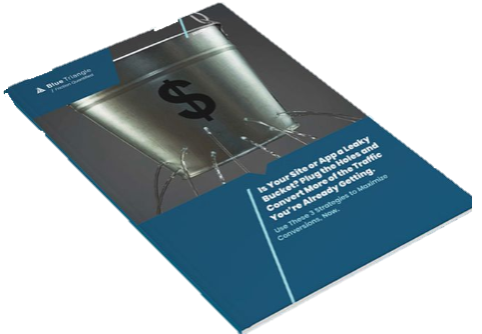4 Surprising Truths About Employee Experience That Are Quietly Costing You Millions
In today's business climate, teams worldwide are constantly challenged to do more with less. Amidst rampant budget cuts and resource constraints, the pressure is on to generate greater profits and cash flow. But why is it that despite everyone working harder, productivity often feels stalled?
The answer may lie in an invisible culprit: "digital friction."
This is the maze of workplace tools, outdated technology, and complex internal processes that drain employee productivity and satisfaction. This isn't a mere inconvenience; it's a systemic tax on every strategic initiative the business undertakes, from innovation to customer service.
Listen to this audio podcast for more on the shift from Return on Investment (ROI) to Return on Employee (ROE), that links employee experience directly to business outcomes:
Here are four overlooked but powerful truths about employee experience (EX)—and why addressing them is essential not just for happier teams, but for lasting success and profitability.
1. Your CIO, Not HR, Is the New Champion of Employee Experience
Conventional wisdom holds that employee experience is the exclusive domain of Human Resources. This view is now fundamentally outdated. Today, the technology an employee interacts with is the employee experience.
The role of the Chief Information Officer (CIO) has shifted from merely "keeping the network running" to architecting the entire digital environment where work happens. CIOs are responsible for delivering the tools, policies, and procedures that employees rely on every single day.
As cloud platforms have automated many administrative IT tasks, technology leaders are now free to prioritize a higher-value mission: improving the employee experience to create tangible business value.
With this new mandate to create business value, the first and most critical battleground for the modern CIO is the digital environment itself—an environment often sabotaged by decades of technological accumulation.
2. Your Bloated Tech Stack Is Actively Sabotaging Your Team
The data on digital friction is staggering. On average, employees lose over two hours each day searching for the information they need to do their jobs. They are forced to toggle between an average of 36 different applications 1,100 times daily.
This constant context-switching is more than just an annoyance; it can decrease productivity by up to 40%. For a team of 100 knowledge workers, that lost time is the equivalent of paying 25 full-time employees to do nothing but search for information, a seven-figure annual loss hidden in plain sight.
This "tool sprawl" is a systemic issue. Most departments use between 40 and 60 different applications, and the company-wide average balloons to over 200 tools. This complexity creates a significant drag on efficiency and the bottom line.
Consider the transformation at Kyndryl, the world's largest provider of IT infrastructure services.
Dennis Perpetua, Global CTO and CXO of Digital Workplace Services, led a massive initiative to modernize their operating stack. In the process, they consolidated over 1,300 internal applications down to just 300, creating a more streamlined and productive environment.
As Perpetua explains on this episode of The Frictionless Experience, the goal is strategic, not just operational.
"It's not just that we want to make things smooth, we do, but there's the intention of improving the employee experience, allowing folks to be more productive, to attract and retain talent, but also to drive those outcomes for our customers."
3. You Can't Improve Until You Talk About the "Ugly Babies"
Billy Ray Taylor, an executive director at Goodyear Tire, has a powerful metaphor for driving change: you have to "talk about the ugly babies."
What he means is that the first step toward genuine, continuous improvement is uncovering the hidden, difficult problems that no one wants to talk about.
"On my team, you have to talk about the ugly babies."
This approach is the foundation of a culture that values progress over politics. A culture of continuous improvement relies on data, not finger-pointing.
The objective is to utilize both quantitative and qualitative data to identify the root cause of friction, regardless of which team or department is responsible for the issue. This focus on objective outcomes breaks down organizational silos, allowing everyone to rally around a common goal: creating a more effective workplace.
4. The Real Goal Isn't "Happiness"—It's Business Resilience
While employee happiness is a welcome byproduct, the strategic imperative of a superior EX is forging business resilience. Happy but static companies are still vulnerable; resilient ones survive and dominate market shifts.
The foundation of this resilience is a concept known as "digital dexterity"—the ability of an organization and its employees to pivot quickly using digital tools. When technology is intuitive and processes are frictionless, teams can respond to new challenges and opportunities with speed and confidence.
The business case for this is clear. According to a Gartner prediction, by 2027, organizations that promote digital dexterity for both managers and employees will experience stronger year-over-year revenue growth than those that do not.
This reveals the ultimate strategic equation: Removing digital friction unlocks employee digital dexterity. Digital dexterity, in turn, is the engine of organizational resilience—the non-negotiable requirement for growth in an unpredictable market.
Is Your Technology Helping or Hurting?
The message for the C-suite is clear: the employee experience is no longer a soft HR initiative but a hard strategic priority with a direct impact on productivity, efficiency, and the bottom line.
Your CIO is now a central architect of this experience. Your bloated tech stack is actively costing you money. Your willingness to confront uncomfortable truths will determine your ability to improve. And your ultimate goal is not just satisfaction, but deep-seated business resilience.
Viewing the employee journey as a core business process to be optimized is no longer optional. It is the primary lever for unlocking the latent productivity within your organization and future-proofing your operations.
It's time to ask a critical question: If the technology your team uses every day had a performance review, what would it say about its contribution to the business?

During the holiday rush, every shopper matters
Optimize the customer journey before the eCommerce event of the year.

.jpg)

